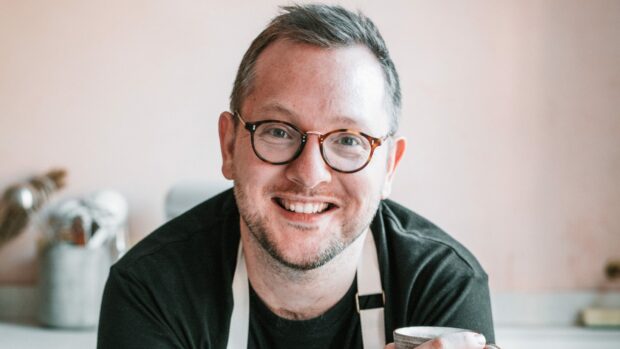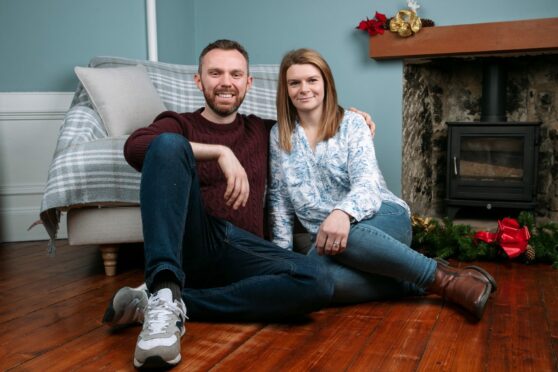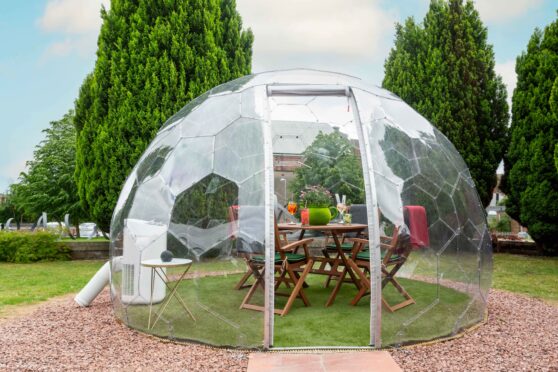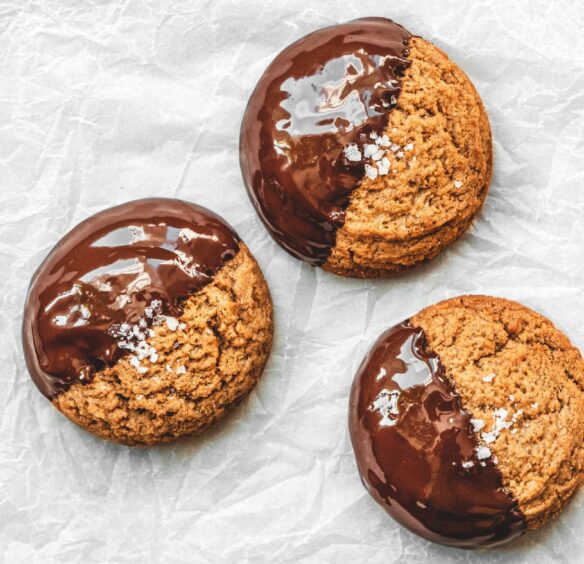
As the cost of living crisis deepens, you might think something like baking would be the first to go from our budgets – but Edd Kimber isn’t so sure.
Of course, he would say that – he is a professional baker, after all – but he has developed a logical theory for it.
“Baking seems to be something that actually increases during economic downturns,” says Kimber, 37. “If you think about the last recession we had, baking actually had a resurgence then.
“My theory has always been that it’s cheaper than other things. Say you are a parent and you’ve got kids to entertain over the summer, baking might be a cheaper activity than other things, because it’s done in the home. It’s something you then get to eat at the end of it.
“During situations like we’re in at the moment, people like those small pleasures that are cheaper than other things. So going out to a restaurant might be prohibitively expensive for some people at the moment, but making a simple dessert at home might be that little luxury we can still afford. Baking can be that comfort in these not-so-great times.”
Speaking of small pleasures, that’s exactly what Kimber – who won the first series of The Great British Bake Off back in 2010 – has dedicated his sixth cookbook to. It’s called Small Batch Bakes.
“Small batch baking was something we did more and more of in our personal lives, me and my partner,” explains Kimber, who lives in London with his partner Mike and their dog Wesley. “It came around because of lockdowns – we were living at home, just the two of us and our dog, we were bored, so I was baking for us, like I always do. We didn’t have people to share it with, so I was trying to reduce our portion sizes and it just became a very natural way for us to bake.”
Kimber soon realised there was an appetite for recipes catering to a smaller amount of people. “A complaint I had from a lot of people was: I love to bake but I live on my own, or I just have me and my kids, and we don’t have the ability to share things as bigger events don’t happen as often. Cookie recipes often serve 20 to 30 people, whereas you might have a house of two.”
He started developing smaller recipes, in a bid “to make baking as relevant to most people’s lives as possible”, says Kimber. “Because most of the time when you’re baking, the assumption is it’s a special occasion – whereas baking can be the little treat at the end of the week, dessert on a Sunday, or making pizzas for date night for the two of you.”
Plus, it doesn’t matter as much if you mess up a small batch. “There’s less pressure with that style of baking,” Kimber suggests – compared to whipping up a big birthday cake or endless cookies for a big event.
Despite all this, Kimber admits it was a tricky book to write. “The thing with this one was trying to take recipes that might traditionally serve a lot more people, and shrink them down to be more appropriate for the book,” he explains.
“That was the challenge. For example, one of my favourite recipes, the ‘in case of emergency cookie’ – it’s a single cookie, and I knew I wanted to do a single cookie but I didn’t want to use a ‘tablespoon of egg’ or make some ridiculously massive cookie.
“So that one had to be played around with a lot to figure out how to make that successfully. It ended up there is no egg in the recipe at all.”
Kimber looked to the past for inspiration too. “I like nostalgia. I play with nostalgia a lot,” he says. “Often it’s trying to reinterpret or recreate something from my childhood, or sometimes other people’s childhoods.”
One of the more old-school recipes in the book is actually his partner’s favourite.
“It’s so incredibly simple, it’s like an old-fashioned prune tea cake. The prunes are soaked in tea or just water – if you want you can even add some rum or brandy to the liquid you soak the prunes in, and you make these little cakes and they’re covered with a bit of demerara sugar.
“There’s no spice in them, no additional flavouring, but they’re so delicious – and they’ve got a really perfectly squidgy texture.”
Kimber doesn’t “think many people will make it, because it’s not splashy, it’s not in your face, it’s not really exciting flavours,” he says. “But it is so delicious.”
Chocolate peanut butter cookies
Edd said: “Hands down, these will be the best peanut butter cookies you ever make – dense and chewy, but also ridiculously easy. As a further treat, I also dip these in chocolate, because everything is better dipped in chocolate, right?”
Makes: 6
You’ll need:
- 175g light brown sugar
- 1 large egg
- ½tsp vanilla extract
- Pinch of fine sea salt
- 225g smooth peanut butter, at room temperature
- Sea salt flakes, for sprinkling
- 100g dark chocolate, melted
Method:
- Place the sugar and egg in a large bowl and whisk together briefly until combined. Add the vanilla and salt and again whisk briefly to combine. Now add the peanut butter and whisk until a thick but smooth dough is formed.
- Cover the bowl and refrigerate for 30 minutes. Line a baking tray with parchment paper. Using a 60ml mechanical ice cream scoop or your hands, place six scoops or balls of cookie dough on the prepared tray, spacing them well apart. Transfer to the freezer for 10 minutes. Meanwhile, preheat the oven to 180°C (160°C Fan) 350°F, Gas Mark 4.
- Sprinkle the chilled cookies with sea salt flakes and bake for 20–22 minutes, or until the cookies have spread a little and the edges are lightly browned. Set aside to cool completely.
- To serve, dip the cookies halfway into the melted chocolate and then place back on the lined tray. Refrigerate until the chocolate has set. If stored in a sealed container, these cookies will keep for four to five days.
Small Batch Bakes, Kyle Books, £18.99, is out now

Enjoy the convenience of having The Sunday Post delivered as a digital ePaper straight to your smartphone, tablet or computer.
Subscribe for only £5.49 a month and enjoy all the benefits of the printed paper as a digital replica.
Subscribe


